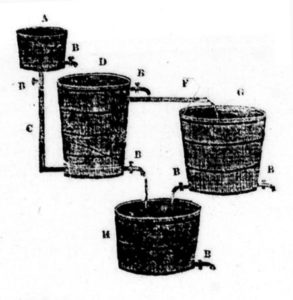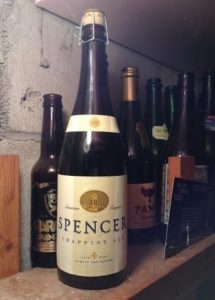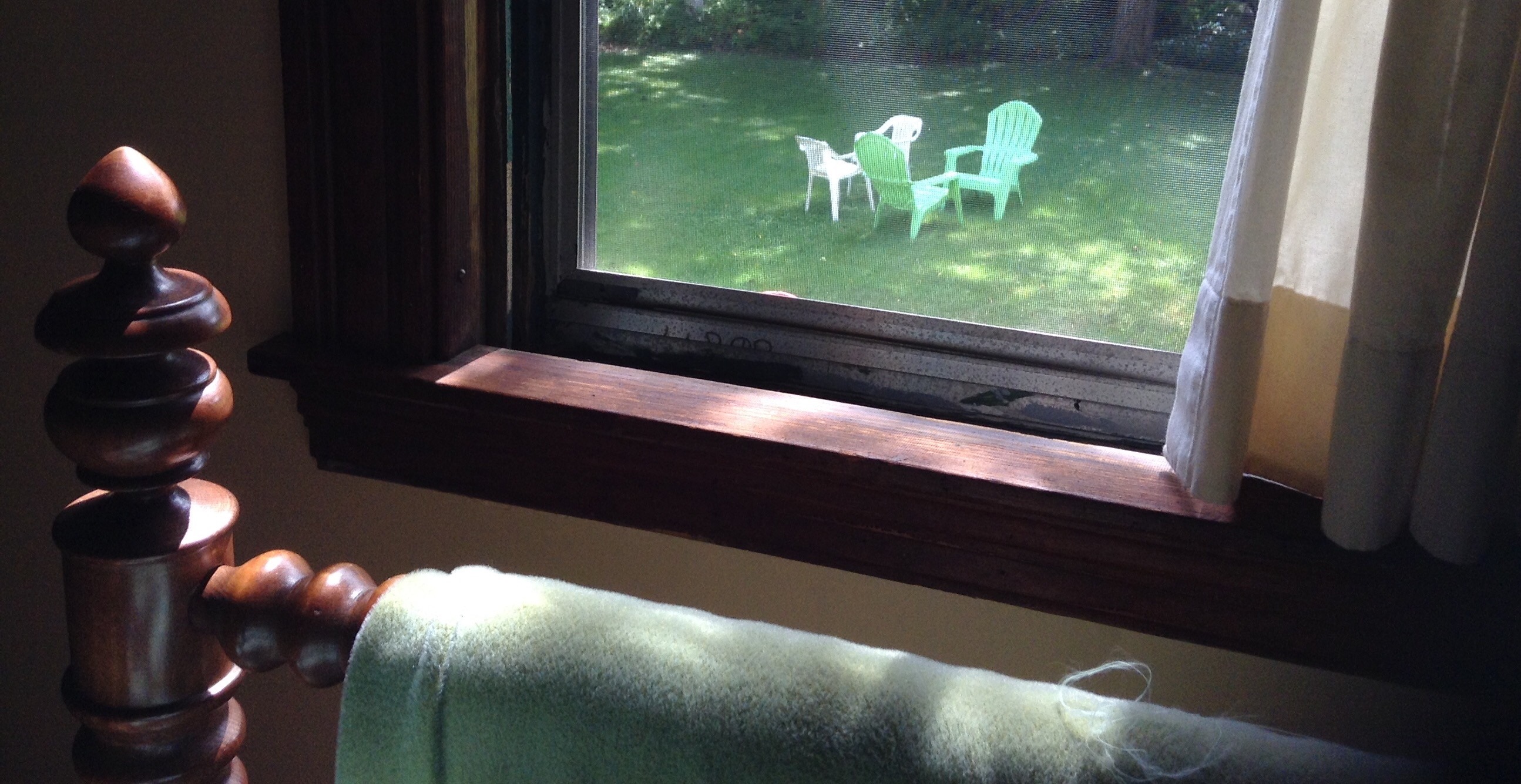I love it. While “beer communicators” are off being told what to write by brewery publicists who can’t believe their luck, “My Beer” an expression about beer. It’s about what the one drinker thinks – or perhaps might think – if he or she thought about beer. The film is an animation of Shrigley’s piece by the same name from his 2004 book Let’s Wrestle.
Month: August 2015
Your Vital Links To Beer News For Wednesday Half-Day
 Two days back off holiday and I am already taking an afternoon off. Slacker. Well, there was a need to do so but not really to do anything other than mind the wee one. Fortunately there’s afternoon baseball to watch online and lots of beer news to catch up with.
Two days back off holiday and I am already taking an afternoon off. Slacker. Well, there was a need to do so but not really to do anything other than mind the wee one. Fortunately there’s afternoon baseball to watch online and lots of beer news to catch up with.
=> First, the best news of all is that I may have figured out a cure to the spam war. When I was in Maine I opened up the comments page on the admin to find myself facing over 5,000 pending comments needing manual deleting. I rolled up my sleeves and figured out a few new things. Result: no evil bad comments for a few days now. Even though the blog’s FB page has neatly stepped in, I can now state with confidence that the comments will be open… as long as this keeps working.
=> Jordan made an excellent point in passing over of FB which needs repeating: “I hope they take about ten percent market share. They will then be eligible for beer store ownership. That’ll put the cat amongst the pigeons.” He’s talking about SABMiller’s enthusiastic return to the Ontario beer market. While I remain unmoved, the petite reform MOU does state that “ownership of TBS will be open to all brewers with facilities in Ontario.” Get it on, SABMiller. Get it on.
=> I was not able to get my butt back down to Albany after driving through the last two weekends coming and going from Maine. Sad as one of the great leaps forward was held yesterday as the BBC programme “Great American Railway Journeys” was in town filming and included the Albany Ale Project as part of the story of its New York episode. As you can see, Craig aka “Showtime” had as natty a sports jacket as host Michael Portillo. Plus I got an email that read “I have spoken to my Director, Tom, and he doesn’t plan on you being on screen on screen on this occasion..” I should have known partnering with a former hand model would end up like this…
=> Another excellent edition of the “Drinker’s Digest” appeared over at Stonch’s place triggering a rather zesty discussion beginning with: “Tandleman has a point there will be certain people with vested interests who won’t be happy to hear it…” Tandy carried forth himself today. Which is associated with this comment on food blogging’s latest ethical crisis by a noted wine writer. As I mentioned in the alternative format, with all due respect, it isn’t at all just about disclosing receipt of resources and benefit as part of one’s writing. That’s just the entry point for the discussion unless you don’t care or don’t understand how it appears to reasonable people when writers accept resources for what they write from the subject matter of the writing.
=> Maureen speaks for me in relation to 80% of the beer books put out in the last five years: “Routson’s beer primer is no better and no worse than 50 others I’ve read in recent years. The usual suspects parade the pages: beer styles, brewing process, cooking with beer, pairing food and beer, “science-y numbers” with which to impress your pals, and tasting notes aplenty.” Personally, I would have used the line a bit ago when we were all supposed to care which beer went with the chilled shrimp and avacado wrap. Note: Jeff gets special dispensation as his book sat with the publisher for two years for some unknown reason. But we can stop with the identa-texts now, right? Write only original beer books starting… NOW!
That’ll do for now. It’s summer. There’s baseball to watch. And a new beer to try. Not telling which. I paid for it myself. No need to tell you anything about it. Bet it will be great. Not telling why.
Maine Cottage. August. Nap time.
Who Was Joseph Coppinger, Early 1800s US Beer Geek?
 The trouble with finding an old text in isolation like the one I wrote about yesterday is establishing some context. Without it, you are at the whim of the person’s claim to fame as opposed to his or her place. It’s as true today as it was in 1815 when Joseph Coppinger published his book on brewing. The context is totally dissimilar. Right now we are still in the era when folk can assert craft beer expertise, isolated from critical assessment due to the flux. We have to take comfort and grounding in the knowledge that few are. In the years leading up to 1815, America was similarly in a time uncertainty. The British were not yet allies again and the lands beyond the east coast’s highlands were not secured. Drifters abounded. I was thinking about this when I was thinking today about Coppinger. How the heck do I know he didn’t make up all that in his book? How can we establish he is reliable? So, I looked to see what I could find out about him. Fortunately, he liked to write letters to the famous and left a bit of a trail:
The trouble with finding an old text in isolation like the one I wrote about yesterday is establishing some context. Without it, you are at the whim of the person’s claim to fame as opposed to his or her place. It’s as true today as it was in 1815 when Joseph Coppinger published his book on brewing. The context is totally dissimilar. Right now we are still in the era when folk can assert craft beer expertise, isolated from critical assessment due to the flux. We have to take comfort and grounding in the knowledge that few are. In the years leading up to 1815, America was similarly in a time uncertainty. The British were not yet allies again and the lands beyond the east coast’s highlands were not secured. Drifters abounded. I was thinking about this when I was thinking today about Coppinger. How the heck do I know he didn’t make up all that in his book? How can we establish he is reliable? So, I looked to see what I could find out about him. Fortunately, he liked to write letters to the famous and left a bit of a trail:
1800: claims in his 1810 letter to President Madison that, prior to emigrating from Ireland to the US, he published a paper in the reports of the Bath and West of England Society on an improved method of the drying of malt.
1802: Coppinger writes two letters to President Thomas Jefferson. He wrote from New York on the subject of naturalization and the need for him to become a citizen to patent an invention. He is an Irish Catholic recently arrived in the New World;
1802-04: Coppinger appears in Pittsburgh on the frontier partnering in a brewery operation located in and even made out of the former Fort Pitt known as Point Brewery;
1806: Coppinger enters into partnership to establish a brewery in Jessamine County, Kentucky. It never comes into operation and a law suit is begun. The dispute is settled through the intervention of the Rev. Stephen Theodore Badin, the first Roman Catholic priest ordained in the United States;
1807: Coppinger wrote from St. Louis a letter to Benjamin Rush, Revolutionary leader. Rush is a pre-Revolutionary anti-slavery activist and a medical doctor. The letter is not about beer so much as a scheme to use public resources to help raise employment levels;
1810: Coppinger wrote to President James Madison describing a list of inventions and also proposes the establishment of a national brewery at Washington. His inventions include an improved threshing machine and a better method of distilling. He gives his address as No 6, Cheapside Street, New York. Says he has been in the brewing trade for twenty years;
1813: An advertisement for Coppinger’s book is published in a Philadelphia newspaper, the Aurora General Advertiser; and
1815: Coppinger writes to former President Thomas Jefferson. He gives his address as 198 Duane St., New York. Jefferson wrote back a couple of week later quite interested in Coppinger’s ideas, noting “in my family brewing I have used wheat as we do not raise barley”.
1815: Coppinger’s publishers, Van Winkle and Wiley of New York, are quite respectable and at the leading edge of the first wave of homegrown American literature. In this same year they publish An Introductory Discourse delivered before the Literary and Philosophical Society of New York, on the fourth of May, 1814 by De Witt Clinton, then Mayor of New York, later state Governor. It is a treatise on the improvement of society.
A brief biography of Coppinger appears in the footnotes to this letter to Jefferson. In his later years he writes two more books: 1817’s Catholic Doctrines and Catholic Principles Explainedand in 1819 On the Construction of Flat Roofed Buildings, Whether of Stone, Brick, or Wood, and the Mode of Rendering Them Fire Proof. He passes away around 1825 after 23 years in the young United States of America. He looks good if a wee bit intense. But, then again, he is a participant in the making of the country, making the world anew. Does this mean he is to be trusted in his description of how to make Dorchester Ale? Not at all. But he has a very good chance of being trustworthy with a bit more digging.
Dorchester Ale: Esteemed When The Management Is Judicious
 Fabulous. I think my new best friend is Joseph Coppinger. Sure he published his book The American Practical Brewer and Tanner 200 years ago… but so few people come by these days I don’t care to notice such things. Like Velky Al did a couple of years ago, I came across an online copy of the book as I was looking for something entirely different. [No. No, not that.] And when I did I immediately – well, right after checking out the tanning section – noticed there were a number of recipes for beers. Styles of beers even. A listing of styles. In a two hundred year old book about beer. Odd. I thought that was invented in the 1970s by that Jack Michaelson chap. But, more importantly, he included this:
Fabulous. I think my new best friend is Joseph Coppinger. Sure he published his book The American Practical Brewer and Tanner 200 years ago… but so few people come by these days I don’t care to notice such things. Like Velky Al did a couple of years ago, I came across an online copy of the book as I was looking for something entirely different. [No. No, not that.] And when I did I immediately – well, right after checking out the tanning section – noticed there were a number of recipes for beers. Styles of beers even. A listing of styles. In a two hundred year old book about beer. Odd. I thought that was invented in the 1970s by that Jack Michaelson chap. But, more importantly, he included this:
Dorchester Ale
This quality of ale is by many esteemed the best in England, when the materials are good, and the management judicious.
54 Bushels of the best Pale Malt.
50 lb. of the best Hops.
1 lb. of Ginger.
¼ of a lb. of Cinnamon, pounded.
Cleansed 14 Barrels, reserving enough for filling….This mode of brewing appears to be peculiarly adapted for shipping to warm climates; the fermentation being slowly and coolly conducted: it is also well calculated for bottling.
Yes, there is more. I just used those three dots to keep you focused. He goes on and on in fact. Over thirty sorts of beer and a few diagrams like the one above. A few things. First, it’s a description of how to make Dorchester Ale. The careful – or perhaps the caring – amongst you will recall that two years ago while waiting for Craig in Albany to go for a beer, I wandered into the New York State Library HQ and found a large number of mid-1700s newspaper notices for British ale coming into the new world. And a few of those ads referenced Dorchester ale. So there you have it. Dorchester was a top quality ale with a bit of ginger added. Sounds like quite nice stuff. Second, yes, the book was published in 1815. And it was published in that year by the firm of Van Winkle and Wiley located at No.3 on Wall Street. It is a guide aimed at the trade. Aimed at the trade that wants to know about shipping to the warmer climes. Which means exporting ale from New York state. Two hundred years ago. Third, he goes on. And on. The book has a lot of data. I need to get into it to find out what.
I believe this illustrates a point: the problem with records. Believing you know what things were once like based on the available records is a dodgy game. Things like (i) Gansevoort’s adin 1794 asking for barley for ale as the old state in the young nation was coming out out famine leading one to leap to (ii) a prosperous local brewery to the south in 1808 connecting you to (iii) this guide in 1815’s NYC on how to brew for export (iv) all might lead you to understanding that there was in fact a vibrant but little understood brewing trade waaay before the US Civil War and waaay before the advent of lager’s supremacy. But you have to watch that sort of thing. Because records are dodgy things. But at least we may well know what Dorcester ale was. Maybe. Sadly, no reference to Taunton. Maybe. Probably out of style by then in the New York market. That might be it. Maybe.
Massachusetts: Spencer, St. Joseph’s Abbey
 Long time reader Brian was good enough to deliver this to me after having driven west for the 1780 Challenge back in May. The beer is brewed by the monastic community at Spencer, Massachusetts. Fortunately, they are a fairly prudent bunch as their beer comes in at just 6.5%. Every time I read some git saying big bottles are for sharing I think of this strength of beer. Mine.
Long time reader Brian was good enough to deliver this to me after having driven west for the 1780 Challenge back in May. The beer is brewed by the monastic community at Spencer, Massachusetts. Fortunately, they are a fairly prudent bunch as their beer comes in at just 6.5%. Every time I read some git saying big bottles are for sharing I think of this strength of beer. Mine.
The burnished gold ale sits under fine lace leaving egg white foam. Shoving the nose deep into the glass, there are aromas of burlap, dry twiggy herbs with pear and banana. A bit of sheddiness but very pleasantly so. The monks suggest there is a light hop bitterness. They are fibbing. On its trip by the gums, there’s plenty of bitter herb as well as a bit of menthol lingering at the end. More of the musty burlap. Underneath the pale malt is sweet and creamy but definitely playing a supporting role. A lightness shows up mid-mouth. There is a little smoke amongst the herbs making me think that this would go great with bacon and old cheddar. But, then again, so does life. There is even a wee bite that reminds me of those saisons which an edge from a bit of white pepper. Clove or very bitter orange maybe. I opened a bag of snapea crisps, the sort of snack monks may have sworn off. It works.
The BA bros rank it lower than the general BAer masses. I get their observation that “nothing really pops out to wow our palates” but I am not sure that’s always the reasonable expectation. This is one of the best beers of its sort that I have had, the flavours articulately placed. But it is not a show off. Instead, it shows restraint and balance. It shows thought. Thank God for that.

